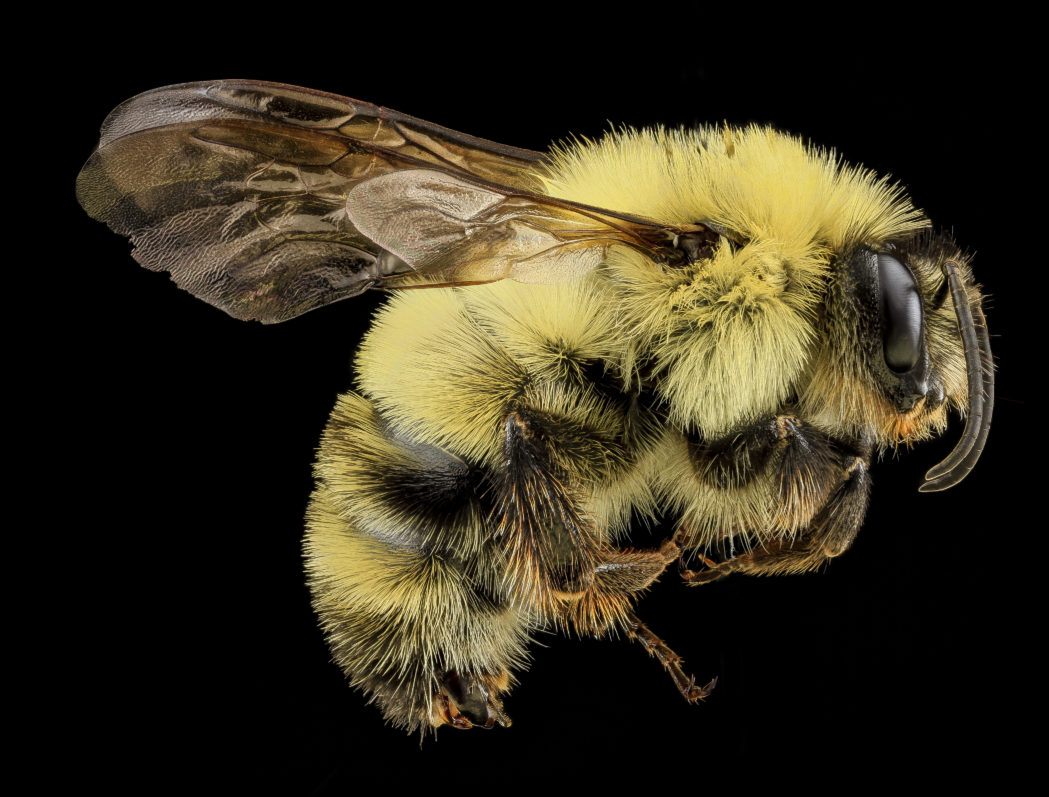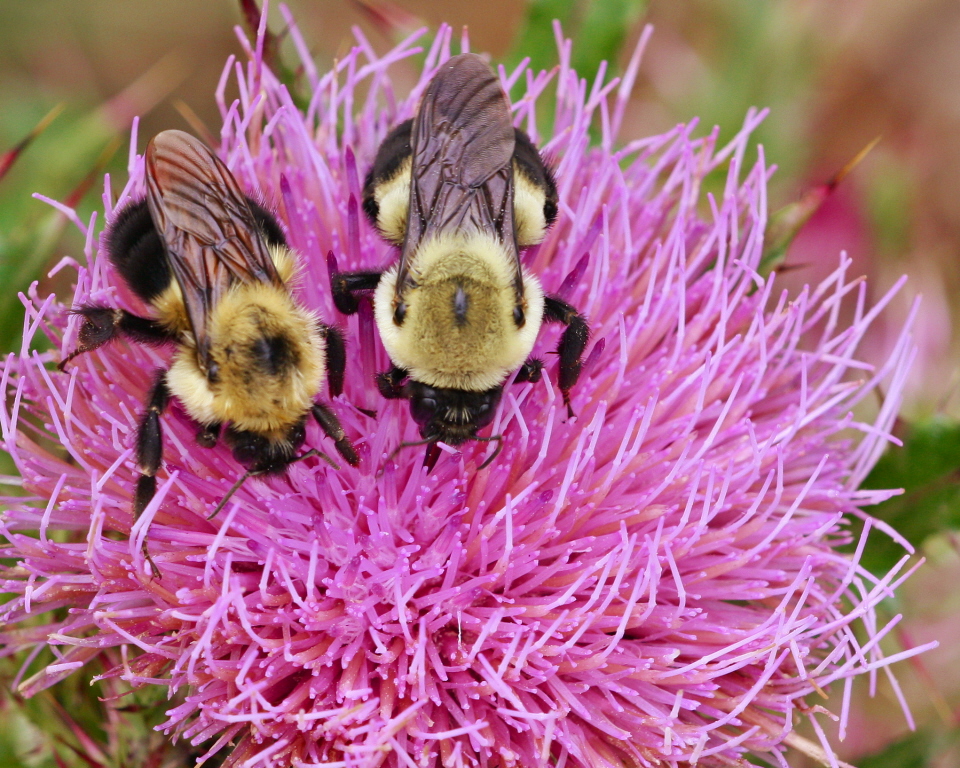Bumble bees
by Claudia Larsen
“Know your native pollinators” is a series of articles that will help you identify and appreciate Florida’s varied pollinators, including bees, wasps, butterflies, moths, beetles, flies, birds and bats. Common eastern bumble bee (Bombus impatiens) on purple thistle (Cirsium horridulum) by Mary Keim.
Besides carpenter bees and cuckoo bees, the Apidae family contains the large subfamily Apinae, the most well-known members of which are the bumble bees of the Bomboni tribe.
CLASSIFICATION
Class: Insecta
Order: Hymenoptera
Family: Apidae
Subfamily: Apinae
FORAGING PREFERENCES
Bumble bees are generalists and visit a wide variety of plants for nectar and pollen. For nectar, they choose flowers that accommodate their species’ tongue length. Preferred wildflowers include thistle (Circium spp.), tickseed (Coreopsis spp.), blanketflower (Gaillardia pulchella), Penstemon spp., dotted horsemint (Monarda punctata), Spanish needle (Bidens alba), goldenrod (Solidago spp.), sunflower (Helianthus spp.), ironweed (Vernonia spp.) and many others.
IDENTIFICATION
Over 250 species of bumble bees occur throughout the world, but only five occur in Florida: common eastern (Bombus impatiens), two-spotted (B. bimaculatus), brown-belted (B. griseocollis), American (B. pennsylvanicus) and southern plains (B. fraternus). The yellow-banded bumble bee (B. terricola) has not been seen in Florida since 1962. Bumble bees are less common in South Florida and are never seen in the Keys.
Bumble bees are robust and hairy, and females have hairy pollen baskets on their hind legs. They are usually distinguishable by the color of bands on their bodies. Because they are medium to large in size (typically .4-.9 inches), bumble bees are easy to identify. There are few other bees as large as bumble bees, and those bees that are large (e.g. large carpenter bee (Xylocopa sp.), digger bee (Anthophora sp.) are not as colorful. A good key for bumble bee identification can be found at www.edis.ifas.ufl.edu/in207.
Bumble bees are more tolerant of cooler weather than other bees due to their large body size, thick hair and their ability to generate internal heat by vibrating their flight muscles. This allows them to emerge early in spring and remain in our gardens throughout fall.
Most bumble bees are ground-nesters and often use existing cavities such as abandoned rodent burrows. They may also use leaf litter, wood piles or tree cavities as nest sites. They nest in colonies of 25 to 400. Most will die at the end of the summer, leaving only a few mated queens, which hibernate through winter and emerge in spring to form a new colony. In the span of a year, there may be several generations of workers and males serving a single queen.
Bumble bees have stingers, but they do not typically sting unless they are provoked or defending their colony. Unlike honey bees, the bumble bee’s stinger is not barbed, so it is capable of stinging repeatedly.
Bumble bee populations have been in decline for several decades because of habitat loss, pesticides and diseases.


